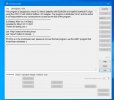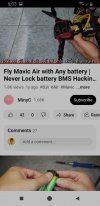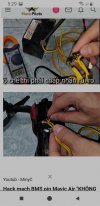Same route and direction. Same test time. The time of year when there is little wind.
Analysis of the flights of other pilots, the choice of the optimal speed in their tests. This is both personal communication and YouTube viewing. There was a discussion on a Russian language forum where pilots shared their information for various drone models. For example, the Mavic Pro 1 has an optimum speed of 48 km/h. A
Mini2 38-40 km/h.
If you do not wish to use this information, then this is your own business. But it’s enough just to fly by yourself and make sure the conclusions are correct.
You didn't explain how you determined
at what distance to turn around.
How did you make
that determination?
You also didn't explain whether the same battery or different batteries were used.
Which was it?
The variance between batteries, even brand new batteries can be significant, and on used batteries, the variance is even greater between batteries.
Did you also fly
every flight to 2 minutes past 0%, or was that only your record flight?
I'm convinced
you could have flown even
farther at a slower speed than 30mph.
The fact that it was determined that the optimum speed for total distance for the Mavic Pro was 48 km/h (30 mph) where the max P speed is 30 mph, while for the
Mini 2 it was determined to be 24 mph, where the max P speed on the
Mini 2 is also 24 mph, lends support for my belief that the max P/Normal Mode speed on most DJI aircraft
is the most efficient speed for maximum distance. The Mavic Air in size and weight is
between the Mavic Pro and the
Mini 2, and yet shares the smaller
Mini 2 max Normal Mode speed of 24mph. Using the same optimum Mavic Pro speed on the much smaller Mavic Air
has to be
less than optimum. If 24 mph isn't the best optimum distance speed on the Mavic Air, then it should certainly be closer to 24 mph than the extreme of 30mph for larger aircraft with bigger motors and larger props. If not 24mph, than perhaps 27mph?
What did the Russian language forum conclude was the optimum speed for the Mavic Air, and what other speeds did they test at for comparison, and how significant was their total distance difference between 30mph and 24mph? 5-7% is certainly
within a margin of error for all other factors that are impossible to control for, and therefore
statistically insignificant, potentially leading one to a
false conclusion about what the optimum flight speed should be.














